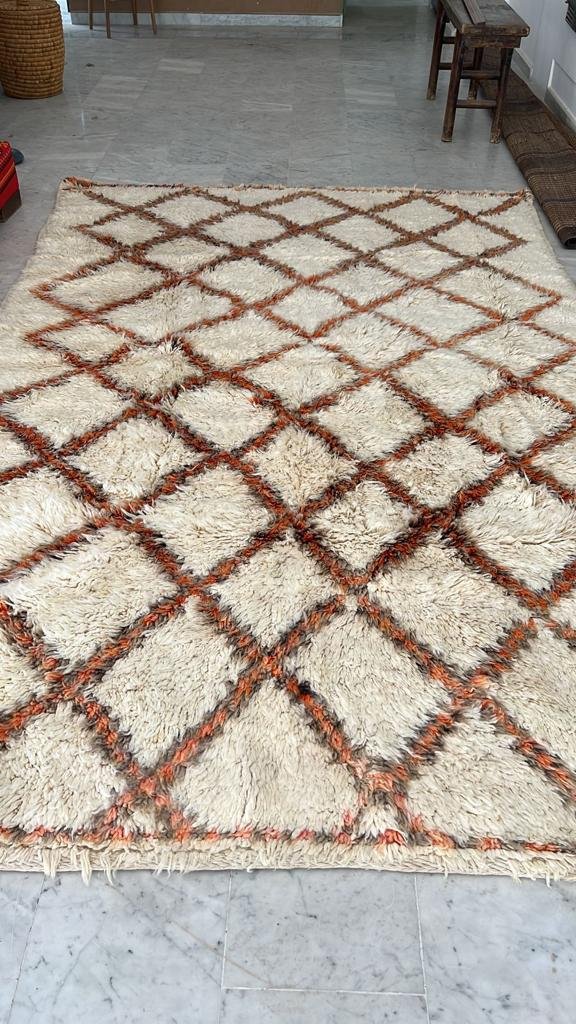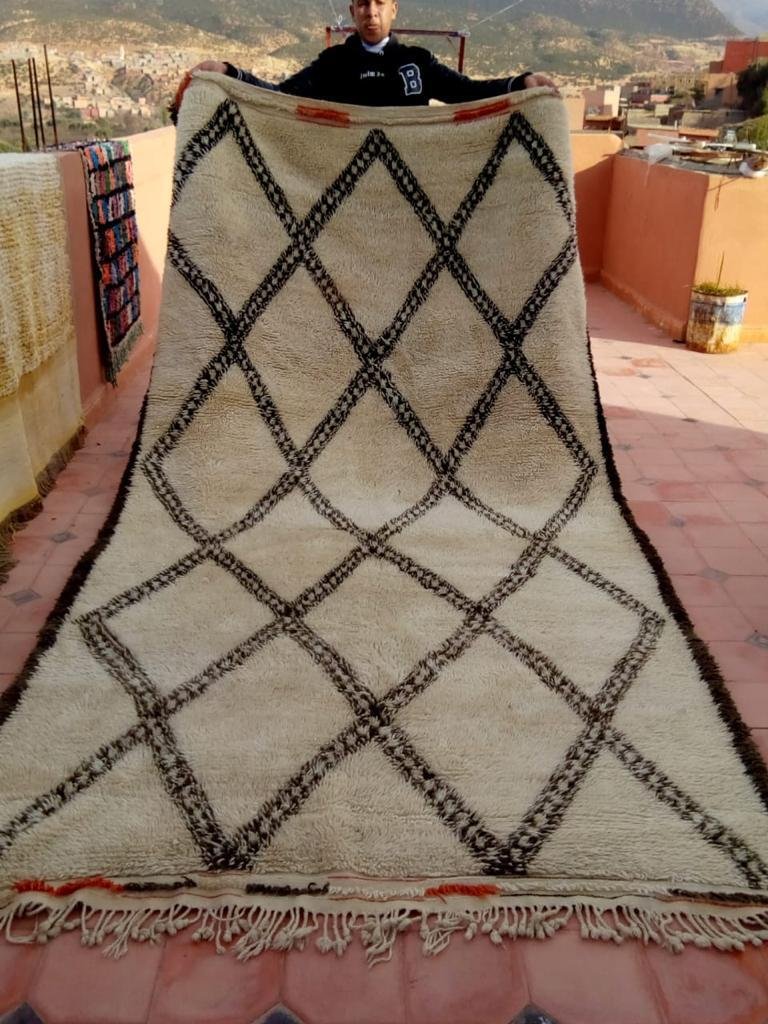The Ultimate Guide to Moroccan Rugs: Types, Cleaning, Pricing, and Quality Explained
1. Introduction
Moroccan rugs are renowned for their unique beauty and cultural significance. They add warmth, style, and a touch of exoticism to any space. However, owning a Moroccan rug comes with the responsibility of proper care and maintenance. Additionally, understanding the factors that influence their pricing and determining their authenticity and quality can be challenging for many buyers. In this ultimate guide, we will delve into the world of Moroccan rugs, covering everything from cleaning and pricing to the different types available and how to assess their authenticity and quality.
2. Understanding Moroccan Rugs
Moroccan rugs have a rich history that dates back centuries. They are handmade by skilled artisans using traditional techniques passed down through generations. These rugs are known for their geometric patterns, bold colors, and plush texture. Moroccan rugs often feature symbols and designs that reflect the cultural heritage of various tribes and regions within Morocco.
3. Different Types of Moroccan Rugs
Beni Ouarain Rugs - From middle Atlas
Beni Ouarain rugs are among the most popular types of Moroccan rugs. They originate from the Beni Ouarain tribe in the Atlas Mountains. These rugs are characterized by their ivory or cream-colored backgrounds with distinctive black or brown geometric patterns. Beni Ourain rugs are made from high-quality wool, which gives them a luxurious feel and durability.
Azilal Rugs
Azilal rugs are known for their vibrant colors and intricate designs. They are handwoven by the Berber women of the Azilal region in Morocco. Azilal rugs often feature abstract patterns and playful motifs, making them a lively addition to any interior. These rugs are usually made from a combination of wool and cotton, giving them a soft and light texture.
Boucherouite Rugs
Boucherouite rugs, also known as rag rugs, are made from recycled textiles such as old clothing and fabric scraps. These rugs showcase a vibrant mix of colors and patterns, creating a bohemian and eclectic look. Boucherouite rugs are an excellent choice for those seeking an eco-friendly and sustainable option.
what are the different types of moroccan rugs ?
Here’s a simple chart explaining what are the different types of moroccan rugs, and comparing their origin, background color, patterns, materials and texture.
4. Cleaning and Maintenance of Moroccan Rugs
these steps will guide you on how to clean beni ourain rug and all moroccan rugs
Proper cleaning and maintenance are essential to preserve the beauty and longevity of Moroccan rugs. Here are some tips to keep in mind:
Regularly vacuum your rug to remove loose dirt and debris.
Blot spills immediately with a clean cloth or paper towel.
Use hair conditioner when cleaning carpets. Pre-mix it with water and splash the mixture over the wet rug. Then, use an upside-down bowl to rub the carpet back and forth. This technique creates suction under the bowl, effectively removing dirt.
Consider professional cleaning for deep cleaning, stain removal, and specialized care.
Rotate your rug periodically to distribute wear evenly and remove dirt. This method is commonly referred to as "summer face" and "winter face" rotation. Turning the carpet like this helps remove a lot of dirt and dust.
Avoid using harsh chemicals or cleaners that may damage the fibers.
By following these cleaning and maintenance practices, you can ensure the longevity and beauty of your Moroccan rugs.
5. Pricing Factors for Moroccan Rugs
The price of a Moroccan rug can vary significantly based on several factors. Here are the key factors that influence the pricing:
5.1 Material and Craftsmanship
The type of material used and the level of craftsmanship play a significant role in determining the price of Moroccan rugs. High-quality rugs are often made from natural fibers such as wool, which is known for its durability and luxurious texture. The intricate weaving techniques and attention to detail by skilled artisans also contribute to the overall craftsmanship of the rug, making it more valuable.
5.2 Size and Design Complexity
The size of the rug and the complexity of its design are important pricing factors. Larger rugs generally command higher prices due to the increased amount of materials and time required to create them. Additionally, rugs with intricate patterns and designs that require meticulous handiwork are often more expensive than simpler designs.
5.3 Age and Condition
The age and condition of a Moroccan rug can significantly impact its price. Antique rugs, which have stood the test of time and carry historical value, tend to be more expensive. Rugs in excellent condition, with minimal signs of wear or damage, are also highly sought after and may come with a higher price tag.
6. Authenticity and Quality of Moroccan Rugs
When purchasing a Moroccan rug, it's important to ensure its authenticity and quality. Here are some key aspects to consider:
Look for handmade rugs crafted by skilled Moroccan artisans.
Examine the weaving technique and the consistency of the knots.
Authentic Moroccan rugs often have imperfections and slight irregularities, which add to their charm and authenticity.
Consider buying from reputable sellers or certified dealers who specialize in Moroccan rugs.
7. Where to Buy Moroccan Rugs
Moroccan rugs can be found both in physical stores and online marketplaces. Here are a few options to consider:
Local Moroccan markets and souks offer an immersive experience where you can directly interact with rug sellers and choose from a wide selection.
Online platforms and websites specializing in Moroccan rugs like Moroccanberbercarpets provide convenience and access to a global market.
Moroccan rugs are not just floor coverings; they are works of art that bring character and cultural heritage to any space. By understanding the different types of Moroccan rugs, their cleaning and maintenance requirements, pricing factors, and how to assess authenticity and quality, you can make informed decisions when purchasing and caring for these beautiful rugs.
Remember, investing in a Moroccan rug is an investment in craftsmanship, tradition, and a piece of Moroccan culture that will enhance your home for years to come.
-
Yes, Moroccan rugs are generally known for their good quality. They are handcrafted using time-honored techniques and natural materials like wool, renowned for its durability and luxurious feel. This combination of skilled craftsmanship and high-quality materials makes Moroccan rugs a wise investment that can grace your home for generations.
-
Yes, Moroccan rugs are known for their durability and can withstand moderate to high foot traffic. However, it's important to choose a rug with a dense weave and consider rotating it regularly to distribute wear.
-
Moroccan rugs can be a great choice for pet owners. Opt for rugs with darker colors or intricate patterns that can help camouflage any pet-related stains or fur between cleanings.
-
Regular vacuuming is recommended to keep your Moroccan rug clean. Additionally, professional cleaning once or twice a year is ideal to maintain its freshness and remove deeply embedded dirt.
-
In some cases, negotiating the price of a Moroccan rug may be possible, especially when purchasing from local markets or independent sellers. However, it's important to be respectful and understand the value of the rug before engaging in negotiations.
-
To store your Moroccan rug, make sure it is clean and completely dry to prevent mold or mildew growth. Roll the rug tightly and wrap it in acid-free paper or a clean cotton sheet to protect it from dust and pests. Store it in a cool, dry area away from direct sunlight and excessive moisture.
-
Yes, you can spot clean your Moroccan rug by gently blotting the affected area with a mixture of mild detergent and water. Avoid scrubbing or rubbing the stain, as it may cause damage to the fibers. If the stain persists, it's best to seek professional rug cleaning services.
-
Absolutely! Moroccan rugs are versatile and can complement a wide range of interior styles, from bohemian and eclectic to modern and minimalist. Their unique patterns and colors can add visual interest and warmth to any space.
-
When choosing the size of your Moroccan rug, consider the dimensions of your room and the furniture placement. A larger rug can anchor the space and make it feel more cohesive, while a smaller rug can be used to define specific areas within a room, such as seating or dining areas.
-
Moroccan rugs are primarily designed for indoor use. Using them outdoors may expose them to harsh weather conditions and cause damage to the fibers. It's best to enjoy your Moroccan rug in indoor settings where it can be better protected. the best option for outdoor use is Tuareg Mats




















